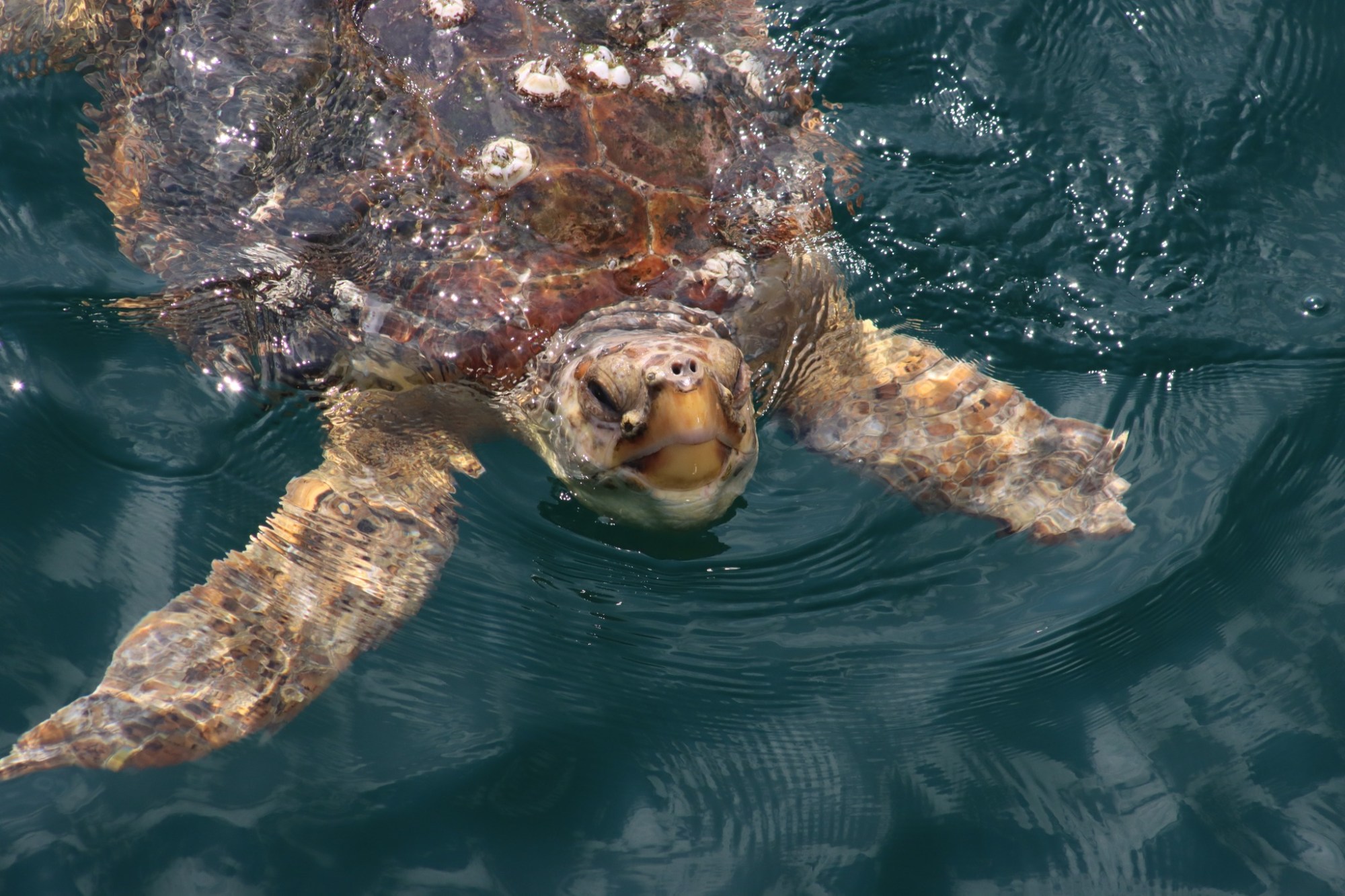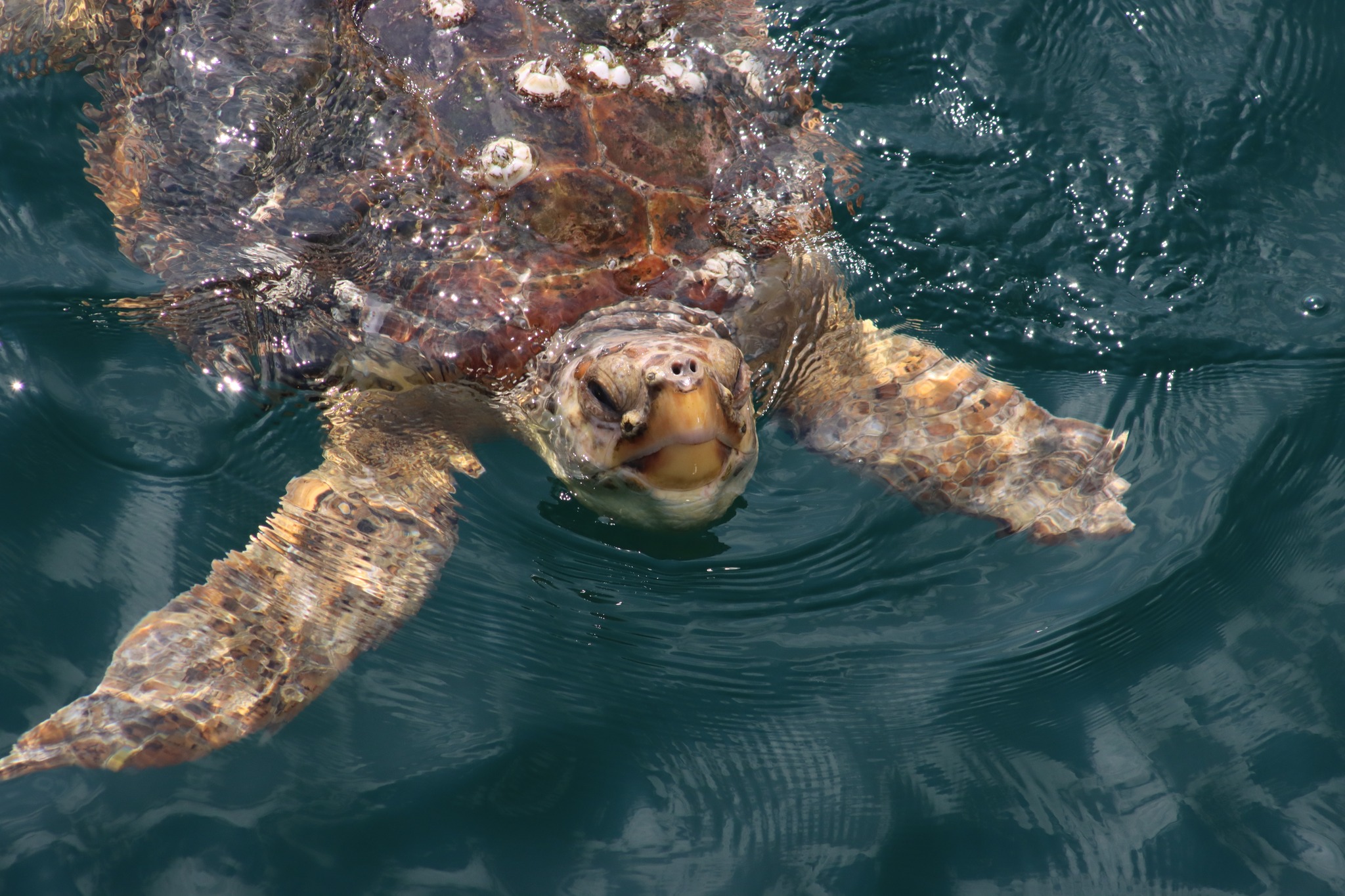The Loggerhead Sea Turtle

As we make our way off the shore of Cape May to look for our larger marine mammals the water becomes increasingly clearer, and this is when it happened!
For the past couple of weeks, the water temperature had been consistently over 70 degrees and more wildlife was being spotted. I had seen tons of schools of bait fish and some scattered Cownose Stingrays but on this day, it was the presence of little moon jellies that hinted at possible other species.
I was standing at the bow of the boat on the upper deck in front of the wheelhouse staring down into the water until all of a sudden a huge yellowish-brown figure of a turtle glided along the surface for a few seconds. A Loggerhead Sea Turtle!
Caretta caretta, otherwise known as the loggerhead turtle, is named for its large head. Their head is home to powerful jaw muscles to help them eat hard-shelled prey (NOAA Fisheries, 2022). They are classified as marine reptiles where they must come to the surface to breathe and lay their eggs on sandy beaches. Their strong jaws help with their carnivorous diet as they tend to eat whelks, mollusks, crabs, and some jellyfish (NOAA Fisheries, 2022).
The loggerhead turtle along with its large head can be identified by its red-brown carapace (upper shell) and its yellow-brown plastron (bottom shell). They can grow anywhere from 2 ½ to 3 ½ feet in length and weigh between 155 to 375 pounds (Sea Turtle Conservancy, 2004). An adult can live for up to 70 to 80 years and reach reproductive maturity around 35 years of age (NOAA Fisheries, 2022).
This species of turtle is the most abundant population of sea turtle in the United States with them residing in U.S. coastal waters but also do migrate to places like the Bahamas and Mexico. They are protected under the Endangered Species Act meaning that it is against the law to harm or kill them, bans imports/exports of them, and provides protection of land and water vital to their recovery as a population (World Wildlife).
To reproduce females lay nests of around 100 eggs between April and September. Each female can have anywhere from 3 to 5 nests during a nesting season. They prefer narrow or sloped areas of beach and burry their eggs in the warm sand. The sex of the offspring when they hatch is determined by the temperature of incubation so cooler temperatures create males and warmer temperatures produce more females. The eggs incubate for around 2 months and when they hatch, the offspring make their way into the open water (NOAA Fisheries, 2022).
There are many things that pose a threat to their survival and one of the biggest impacts is coastal developments limiting nesting habitats. Human disturbance to their nesting grounds poses a threat to the species’ population growth as they affect nests being created and also harm new hatchlings (Sea Turtle Conservancy, 2004). Other threats include vessel strikes, marine debris/ocean pollution, and bycatch in fishing gear (NOAA Fisheries, 2022).
As magical as this experience was for me to see one of these turtles in person it is also important to think about our effect on them. I would love for others to be able to experience these sightings in the wild, but we must be conscious of our impacts on the wildlife and marine life around us.
-Kai Haynes, Intern at Cape May Whale Watch and Research Center
Ursinus College ’24
Sources:
https://www.fisheries.noaa.gov/species/loggerhead-turtle


